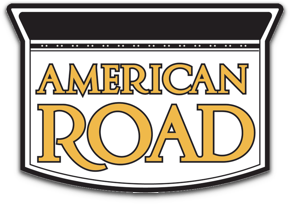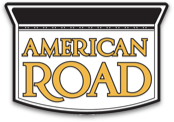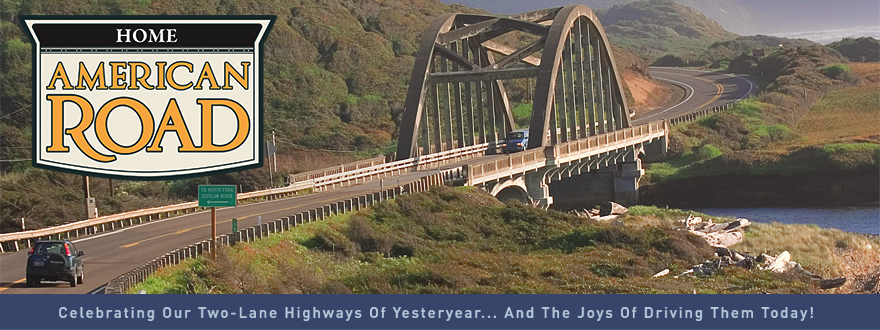-
Posts
196 -
Joined
-
Last visited
Content Type
Profiles
Forums
Gallery
Blogs
Calendar
Posts posted by Steve_Colby
-
-
Nice shots, Jim!
~ Steve
-
My parents own a dog they "rescued." It had been called Abby for its first year of life, but my mom decided to change it to Abigail for whatever reason. Who's to say that she needs to still be called Abby because that's what her name was originally?
I think it is worthwhile to keep pointing out that the road has three major sections, all with their own individual names. But what's the harm in calling them, collectively, the National Road?
jim
Jim,
There is no problem calling the combined road the (Historic) National Road... As long as the histories of the individual roads aren't applied to the whole. (Authorized by the Act of 1806, first federally-funded, etc)
~ Steve
-
Thanks for everyone's thoughts and replies.
As you all are aware, I've have done (and continue to do)fairly extensive research on the "National Road". The research I've done so far, seems to indicate the name "National Road" came into "common" use about 1825. This is about the same time the Baltimore to Cumberland turnpikes (privately-owned toll roads) connected with Cumberland. Officially (In legislation, both federal and state), the road from Cumberland to Wheeling was still called the "Cumberland Road". The Cumberland Road was accepted by MD & PA in 1835. According to MD State documentation, most of the Road from about Hagerstown to the PA line was abandoned. (Both county and privately owned.)
As a Road historian, my dispute is the applying of the history of the federally-funded Cumberland Road to the National Road as a whole. (For example, apples and oranges are called fruit...) The Act of 1806 authorized the CR, not the commonly-known NR. 1811 is the start date of the CR, and on and on...
My quest is to educate the public the National Road represents three separate roads, each with their own history.
~ Steve
PS I have edited the Wiki National Road page in the past and will endeavor to do it again in the near future.
-
OK. To paraphrase Popeye "That's all that I can stand and I can't stands no more!".
We, in Cumberland, MD, recently celebrated the bicentennial of the start of construction on the National Road. The problem lies in the fact it's not the bicentennial of the National Road but that of the Cumberland Road. The road that runs from Cumberland, MD to Wheeling, WV (VA then).
History will not be served until the-powers-that-be acknowledge the National Road as three separate roads, the Baltimore Pike, the Cumberland Road and the Cumberland Road West of the Ohio, each with its own intrigue and history. (They also need to understand, Rt. 40 incorporates the three roads known as the National Road but they are not one in the same.)
It's time for some historical activism and I'm ready for a fight!
~ Steve
-
I haven't had time to check most of these resources out... But here they are:
University of Texas (at Austin)
Historic Topos - Google Earth Library
List of United States Map Resources
~ Steve
-
Denny,
This may or may not help... Here's a link to the David Rumsey Map Collection's maps from the Rand McNally Road Atlases circa 1924 and 1927: David Rumsey
The Collection has other state maps that can be accessed by a search. All the maps are zoomable and downloadable.
~ Steve
-
Jim,
Brian provided a link this morning for the NR from Cumberland to Frederick, MD. (NRF)
I have studied the map in detail, but I did find some discrepancies on the west side of Sideling Hill. I too wonder about the date of the topo Brian used. There are a few spots I know are wrong from on-the-ground confirmation and verification on period USGS topos.
All in all, I think it's better than 95% accurate.
~ Steve
-
A member of the National Road Forum has integrated the 1910 USGS Route of the National Road, from Cumberland, MD to Vandalia, IL, into Google Earth.
The display of the 1910 route, in conjunction with the current route, illustrates realignments that have been made in the last 100 years.
This is a invaluable tool for those of us that search for early vestiges of the old road.
For more information and links to the map file, go to the National Road Forum – 1910 USGS Map File
~ Steve
-
The National Road heading east up Laurel Mountain toward Uniontown, PA. The famous Summit Hotel is at the top of the mountain. Trucks have to stop at the top of the mountain and proceed at 10 mph down the west side.

~ Steve
-
I got off of the Cumberland Road, mid-summer, and have been exploring old back roads. Western MD is steeped in history and many of the back roads are over 200 years old. Old structures that have avoided the crush of progress can be founded nestled in small towns I didn't know existed.
On a recent exploration for the remains of a late 1700s grist mill, we stumbled upon this beauty. Additional research placed the construction date circa 1924. A short distance down the road is a magnificent brick mansion, formerly owned by the Shaw family.

~ Steve
-
Indiana seems to be holding on to those better than most. I just now posted a picture of a Lafayette, Indiana, mug I drained in June and the gallery already had a shot of a mug I emptied a couple years back. It wasn't quite in Indiana but didn't miss it much. It
was on the Ohio side of a town that straddles the border.
Denny,
The last tall frosted mug of root beer I had was from A&W. I lived in Tempe, AZ for a while, in 1969, and there was an A&W stand on Apache Blvd. If memory serves, a tall frosty cost 50 cents.
~ Steve
-
Root beer in a frosted mug.... It's been a long time since I had one of those.
Thanks for the photos Jim!
~ Steve
-
Looks like it really is a section of a 1960 Buick Invicta or LeSabre (three "portholes"). If not, it's a really well-done replica!
It's real and it has an Invicta nameplate on the front fender.
~ Stve
-
Kind of makes you do a double-take...


The location is an old school in Oldtown, MD with some kind of car repair/restoration business in one side and a restaurant in the old cafeteria.
~ Steve
-
Aha! Now that I've been there, I get it. This is why the white former service station at the bottom of Hixon Rd. has a sign that reads "Dead end road. No trespassing". That's where the National Road originally turned. Eighty years after this segment of road was by-passed, there are still people who would like to use it.
Mark,
I really wanted to go down and photograph the big white house... Which looks very much like an old commercial building. The "No Trespassing" sign at the end of the road and the somewhat remote location (Hillbilly Cannibals <g>) kept me from venturing forth.
~ Steve
-
Denny,
The area around Front Royal is quite nice. We used to camp on the Shenandoah not too far from there in Luray, VA.
Thanks for the photos and commentary!
~ Steve
-
One of my favorite signs on Route 40A west of Middletown, MD is a hand-made sign, on an old building, which reads "Rudy's Welding and Cold Beer". (The Town of Middletown was dry for years. Rudy's is in the County.)
~ Steve
-
If memory serves, when I moved to Frederick in 1979, the two-lane alignment, now called Rt. 144, was the Interstate. It was not only two-lanes but also had grade level on-off access from surrounding roads. There is a seafood restaurant along this section of road (Jug Bridge) that's been a local favorite for years.
Christopher Busta-Peck shot some photos of the old Jug Bridge a few years ago.
~ Steve
-
Jim,
Here's a few more... Although they may be steel, not iron.
This bridge is still in service on the National Road realignment just east of Grantsville, MD. It replaced the famous Casselman River Stone bridge.

The Brownsville, PA truss bridge over the Monongahela River.

The Zane Gray Bridge, Muskingum County, Ohio, is now pedestrian only.
http://bridgehunter.com/oh/muskingum/zane-gray/
~ Steve
-
-
Just this past weekend I visited Sideling Hill and saw for myself the Hixon Rd. alignment, enjoying in person the sites I had so far only seen here. I was inspecting the fruit cider stand at the top of the hill when someone drove up and informed me that there was a black bear on the road about half-way down the hill. I found that all the more reason to explore Hixon Rd. At the bottom of Hixon Rd., right where it crosses McFarlane Rd., there is a row of old tourist cabins. The driver of a passing pick-up truck confirmed for me that's what it was.
Mark,
Welcome to my neck of the woods! You can see more photos of the area, both vintage and current, at the Cumberland Road Project/Sideling Hill page.
~ Steve
-
Excellent find, Jim.
~ Steve
-
Wow! Thats some expensive wallpaper...

~ Steve
-
Great photos, Dave. Did you, perchance, get a close-up of the builder's plate at the top of the bridge?
~ Steve





I Apologize For The Lack Of Participation As Of Late
in National Road / U.S. 40
Posted
To my friends at on the American Road Forum. My lack of participation has not been intentional. I recently found out I have breast cancer and cancer in my eyes. I have started treatment (chemo) and it is certainly taking it's loll on my ability to function normally.
I will have to live vicariously through your photos and commentaries for awhile.
To add insult to injury, our parrot crapped on my ergo keyboard an shorted out a number of keys on ht e left side... Bummer!
~Steve